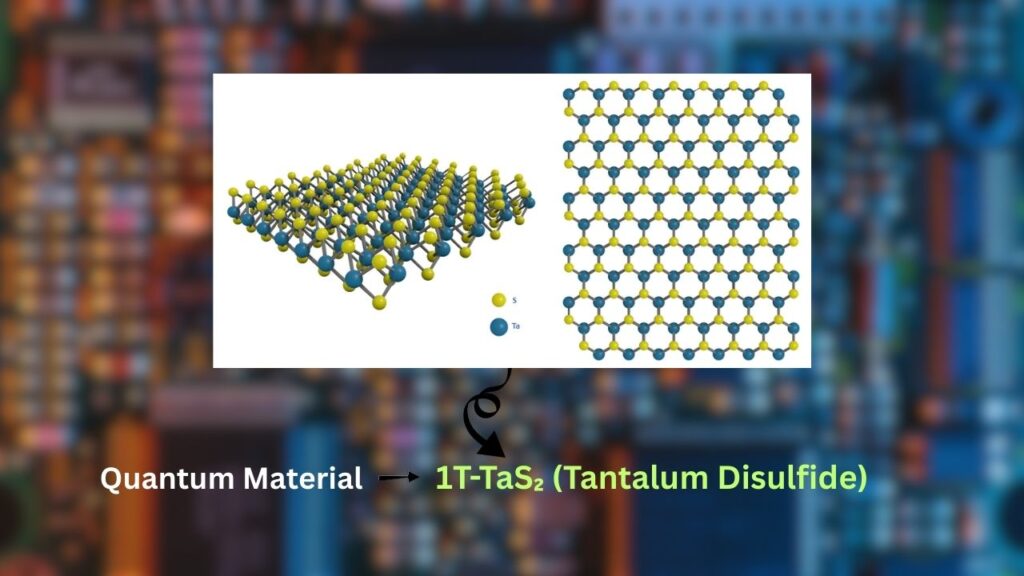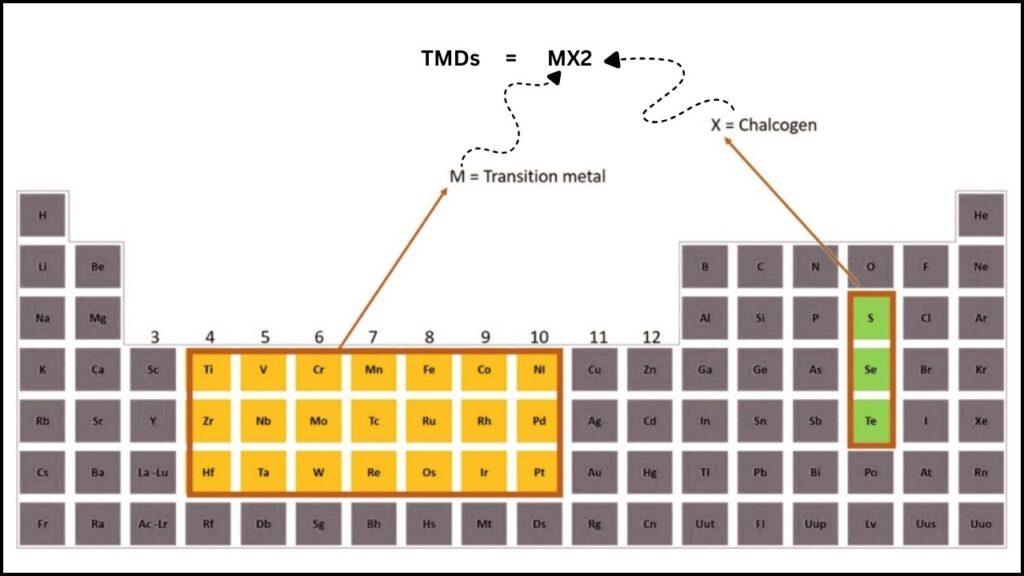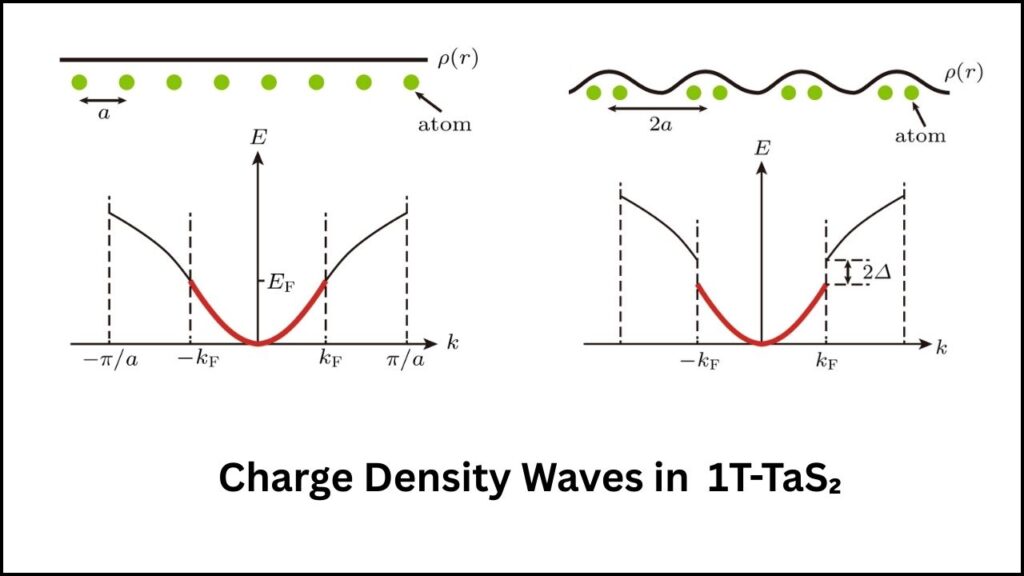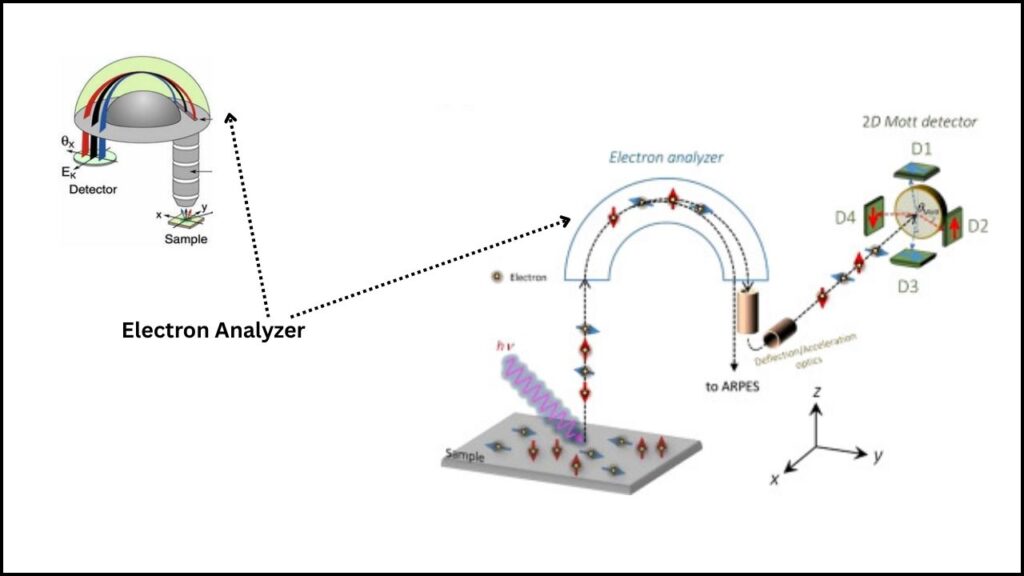The world of electronics is on the brink of a revolution, and it’s all thanks to a remarkable scientific breakthrough: a new quantum material reveals a hidden metallic state for ultra-fast electronics. This discovery could transform the devices we use every day, from smartphones to supercomputers, by making them dramatically faster and more energy-efficient. But what exactly is this quantum material, how does it work, and why should you care? Let’s dive in.

Table of Contents
New Quantum Material Reveals Hidden Metallic State for Ultra-Fast Electronics
| Feature/Topic | Details & Data | Professional/Career Impact |
|---|---|---|
| Material Name | 1T-TaS₂ (Tantalum Disulfide) | Emerging field for materials scientists, quantum engineers, and device designers |
| Discovery | Hidden metallic state revealed via controlled heating/cooling (thermal quenching) | New research avenues in quantum electronics, memory, and computing |
| Speed Potential | Potential for terahertz (THz) switching—up to 1,000 times faster than silicon-based electronics | Could revolutionize processor and device design |
| Stability | Metallic state stable for months at -73°C (previously <1 second at cryogenic temperatures) | Enables practical, reliable device applications |
| Switching Mechanism | Light or electric pulse triggers insulator-to-metal transition | Opens door for optoelectronic and memory device innovation |
| Applications | Data storage, quantum computing, next-gen electronics | New career opportunities in quantum tech, materials science, and electronics engineering |
The discovery of a hidden metallic state in 1T-TaS₂ is a milestone in the journey toward ultra-fast, energy-efficient electronics. By harnessing the unique properties of quantum materials, scientists are opening the door to devices that are not just incrementally better, but exponentially more powerful. Whether you’re a student, a professional, or a tech enthusiast, this is a development worth following closely—because the next revolution in electronics is already taking shape.
What Is 1T-TaS₂? Understanding the Quantum Material
1T-TaS₂ stands for tantalum disulfide in a specific atomic arrangement. It belongs to a group called transition metal dichalcogenides (TMDs), which are made of layers only a few atoms thick.

These materials are fascinating because their properties can change dramatically based on how their atoms are stacked, how thin they are, and even how you treat them with light or electricity.
Why Are TMDs So Important?
- Layered Structure: Each layer is like a sheet of paper, and these sheets can slide over each other or be peeled apart. This gives TMDs unique electronic and mechanical properties.
- Quantum Effects: At such tiny scales, electrons behave differently. Their quantum properties can be harnessed for new types of devices.
- Charge Density Waves (CDWs): In 1T-TaS₂, electrons organize themselves into repeating patterns, which can lock the material into an insulating state or, under the right conditions, unlock a metallic state.
The Hidden Metallic State: A Scientific Breakthrough
For decades, scientists have been fascinated by the idea that some materials can “hide” new states of matter, only revealing them under special conditions. In 1T-TaS₂, researchers discovered that by using a precise combination of heat and cooling—a process called thermal quenching—they could trap the material in a hidden metallic state.

How Does the Hidden State Work?
Think of 1T-TaS₂ as a playground where children (electrons) are usually standing still in a pattern (the insulator). If you blow a whistle (apply a pulse of light or heat), the children suddenly start running around (the metallic state), allowing electricity to flow.
- Thermal Quenching: Scientists heat the material quickly and then cool it rapidly, “freezing” the electrons in a new arrangement.
- Metastable State: This metallic state isn’t the material’s natural resting state, but it can last for months at low temperatures.
- Switching Mechanism: The transition can be triggered by a light pulse or a short burst of electricity, making the process ultra-fast and reversible.
Why Does This Matter for Electronics?
1. Unprecedented Speed
Most modern computer chips run at speeds measured in gigahertz (GHz). The hidden metallic state in 1T-TaS₂ allows for switching speeds in the terahertz (THz) range—potentially up to 1,000 times faster. This means future devices could process information almost instantly, opening new frontiers in data processing, artificial intelligence, and communications.
2. Energy Efficiency
Switching between insulating and metallic states with a simple pulse of light or electricity means less energy is wasted as heat. Devices could run cooler, use less power, and have longer battery lives.
3. Simplified Device Architecture
Traditional electronics require different materials for conducting and insulating roles. 1T-TaS₂ can do both, allowing for simpler, more compact, and potentially more reliable devices.
The Science Behind the Discovery
Charge Density Waves and Quantum Phases

In 1T-TaS₂, electrons form charge density waves (CDWs)—patterns that repeat across the material. These patterns can lock the material into an insulating state. However, under certain conditions, the patterns break down, and the material becomes metallic.
- Angle-Resolved Photoemission Spectroscopy (ARPES): Scientists use this advanced imaging technique to observe the changes in the material’s electronic structure, confirming the presence of the metallic state.
- Stability: Previously, the metallic state could only be observed for fractions of a second at extremely low temperatures. Now, with thermal quenching, it can last for months at temperatures as high as -73°C, making it much more practical for real-world devices.

Practical Advice: How This Discovery Could Affect Your Future
For Students and Early-Career Professionals
- Explore Materials Science: This field is growing rapidly. Understanding quantum materials like 1T-TaS₂ will be a valuable skill for future careers.
- Learn About Quantum Devices: As quantum technologies become more mainstream, expertise in this area will be in high demand.
For Engineers and Technologists
- Stay Informed: Follow reputable scientific journals and attend conferences to keep up with the latest research.
- Collaborate Across Disciplines: The next wave of electronics will require close collaboration between physicists, materials scientists, and engineers.
For Business Leaders
- Invest in Research and Development: Companies that invest early in quantum materials could gain a significant competitive edge.
- Monitor Commercialization: Keep an eye on startups and research institutions working with TMDs and related materials.
Step-by-Step Guide: Unlocking the Hidden Metallic State
Step 1: Material Preparation
- Grow or exfoliate thin layers of 1T-TaS₂, often just a few atoms thick.
Step 2: Apply a Stimulus
- Use a short, intense pulse of light (laser) or electricity to rapidly heat the material.
Step 3: Rapid Cooling
- Cool the material quickly to “freeze” the electrons in their new, metallic arrangement.
Step 4: Observe the Change
- Use tools like ARPES to confirm that the material now conducts electricity like a metal.
Step 5: Reversibility
- The process can be reversed by reheating the material, returning it to its insulating state.
Real-World Applications and Future Potential
Memory Devices
Imagine a computer memory that switches between “on” and “off” states with pulses of light, rather than traditional transistors. This could lead to faster, more reliable, and more energy-efficient data storage.
Quantum Computing
The unique quantum states in 1T-TaS₂ could be used to build new types of quantum bits (qubits), which are essential for quantum computers. These computers could solve problems far beyond the reach of today’s machines.

Sensors and Optoelectronics
Devices that respond instantly to light or heat could be used in advanced cameras, medical sensors, or high-speed communication systems.
Next-Generation Processors
As silicon-based technology approaches its physical limits, materials like 1T-TaS₂ offer a path to even smaller, faster, and more efficient processors.
New Quantum State Discovery Set to Revolutionize Material Science Worldwide
AI Just Made 2D Materials Stronger—Here’s How It’s Changing the Future of Material Science
FAQs About New Quantum Material Reveals Hidden Metallic State for Ultra-Fast Electronics
What is a “hidden metallic state”?
A hidden metallic state is a special way that electrons arrange themselves in a material, allowing it to conduct electricity even though it usually acts as an insulator. This state can be triggered by a pulse of light or heat and can last for extended periods under the right conditions.
Why is 1T-TaS₂ significant for the future of electronics?
1T-TaS₂ is significant because it can switch between being an insulator and a metal, making it extremely useful for next-generation electronics, memory devices, and quantum computers.
How fast could devices using 1T-TaS₂ be?
Devices could operate at terahertz speeds, which is up to 1,000 times faster than today’s best silicon chips.
Is this technology available for commercial use now?
The research is still in the experimental stage, but recent breakthroughs make practical devices much more likely in the coming years.
What careers could benefit from this discovery?
Materials science, quantum engineering, electronics design, and computer hardware development are just a few fields that will see major opportunities as this technology matures.



















